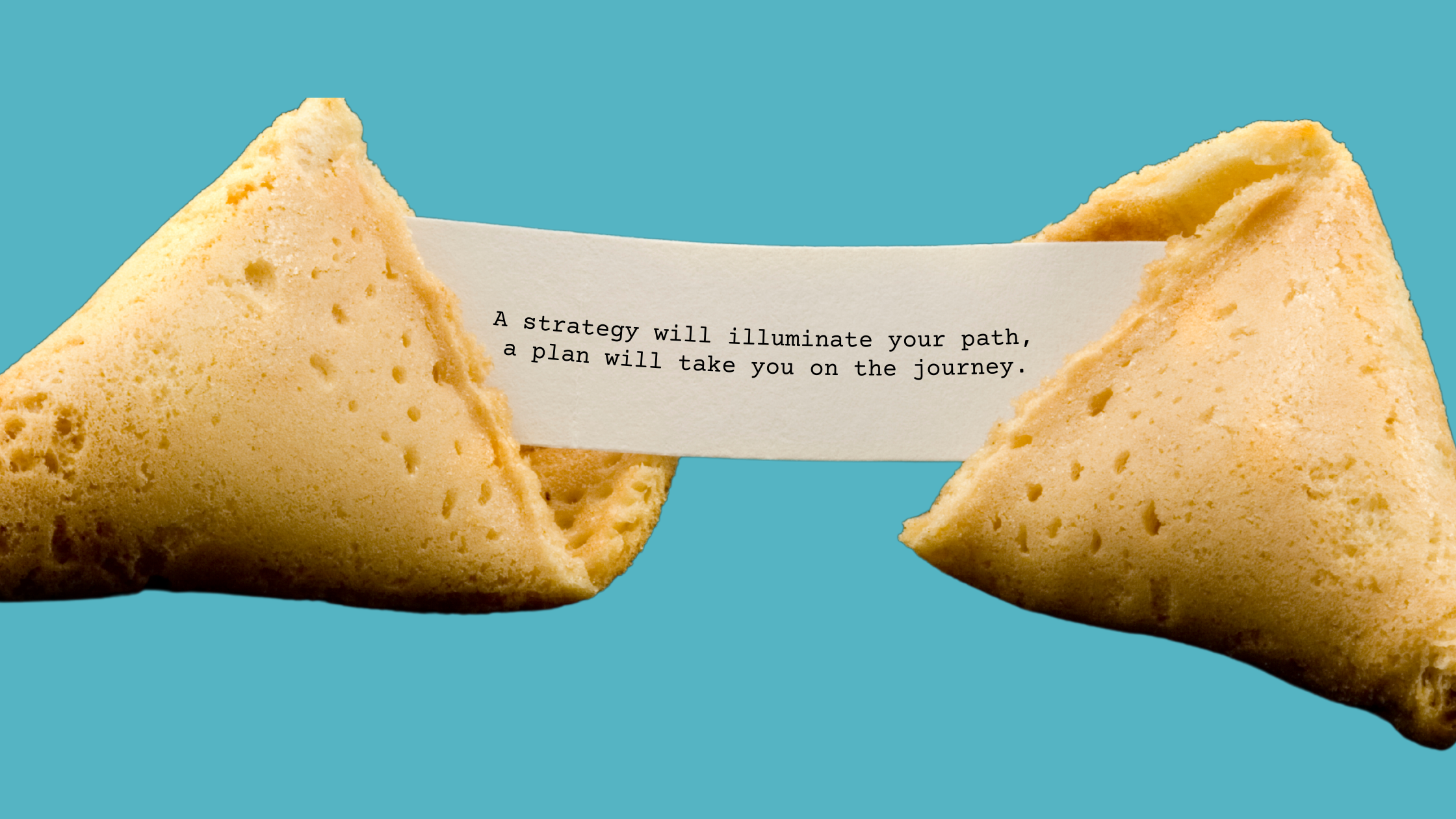What’s the difference between a strategy & a plan?
People often use ‘strategy’ and ‘plan’ interchangeably. It’s an easy mistake to make given the dictionary definition for strategy describes it as a ‘plan’. And it is a plan; a plan for what to do, but not how to do it. Confused?
Whether you’re working with content, internal communications, customer engagement or marketing, it’s critical to know the difference between the two, and how to use them both!
A strategy is to a plan, like a menu is to a recipe
Consider a strategy like a menu for your next dinner party. It outlines your overarching mission, vision, themes and goals.
It's a high-level view of how you intend to entertain your guests, considering various possible dietary requirements, seasonal produce, your guests schedules and preferences, size of your dining room and the available utilities in your kitchen.
You’d ask yourself whether it’s for a celebration or book club? Big or intimate? Casual or fine dining? Long and relaxed or structured and quick? Indulgent or clean eating? Indian or French?
In essence, a strategy is about high-level and longer-term thinking. It answers the questions ‘why?’ and ‘what?’. It should be flexible and able to adapt to changing factors.
On the other hand, a plan is like your recipe. It outlines the exact actions, resources, and timings required to execute your menu. In fact, depending on your strategy, you may need several recipes. Your recipes are more focused, concrete, and tactical, guiding you through the delivery of each dish to contribute to the overall menu.
A strategy needs a plan (or multiple plans) in order to make it happen. The plan maps out how the strategy will be achieved. It’s focused on the tactical details and is bounded by a specific timeframe.
So, why's it important to have both?
There's always a temptation (especially by senior stakeholders) to jump straight to tactics: the shiny, tangible things. The quick wins. And, the work that people see. But without a robust strategy, jumping to the plan and choosing tactics is like throwing spaghetti at a wall and hoping it sticks.
The strategy informs the plan, and the plan operationalises the strategy. You need both to make an impact.
Let's take a look at communications as an example
What to include in a communication strategy
Purpose: An outline of the situation and how you got to this point. Why is this issue or opportunity important
Goals: What are you trying to achieve and how does it link to your organisations overall goals?
Objectives: What change do you want to see in your audience? Awareness, acceptance, understanding or action? The changes identified are the steps that need to be achieved to reach your goals.
Situational and competitive analysis: Assessing the factors that will impact your strategy so you can identify opportunities and anticipate challenges. It includes assessing what the current state, strengths, weaknesses, market trends, and audience insights.
Target audience/s and their needs: Who you need to communicate with in order to achieve your goals and what they need in order to make the change you've identified in your objectives.
Key messages: The key information your audience needs (not every possible point that needs to be made throughout the strategy). They set the tone and intent of your communications.
Channels, overarching tactics & priority projects: These will help you to achieve your goals and objectives.
What to include in a communication plan
To start, your communication plan, may echo some parts of your communciation strategy, including situational analysis, objectives, target audiences, and key messages. It's likely you'll need to drill down into more detail for each of them.
With your strategy as a guide, you can now map out:
what needs to be done: detailed communication tactics, activities and tasks that need to be executed
who is doing what: roles and responsibilities
when it has to be done: a detailed schedule
what you need in order to get it done: budget and resources
Need help sorting your strategy out from your plan?
We're passionate about helping our clients achieve impact through communications, content, brand, events and engagement with strategy and planning.




